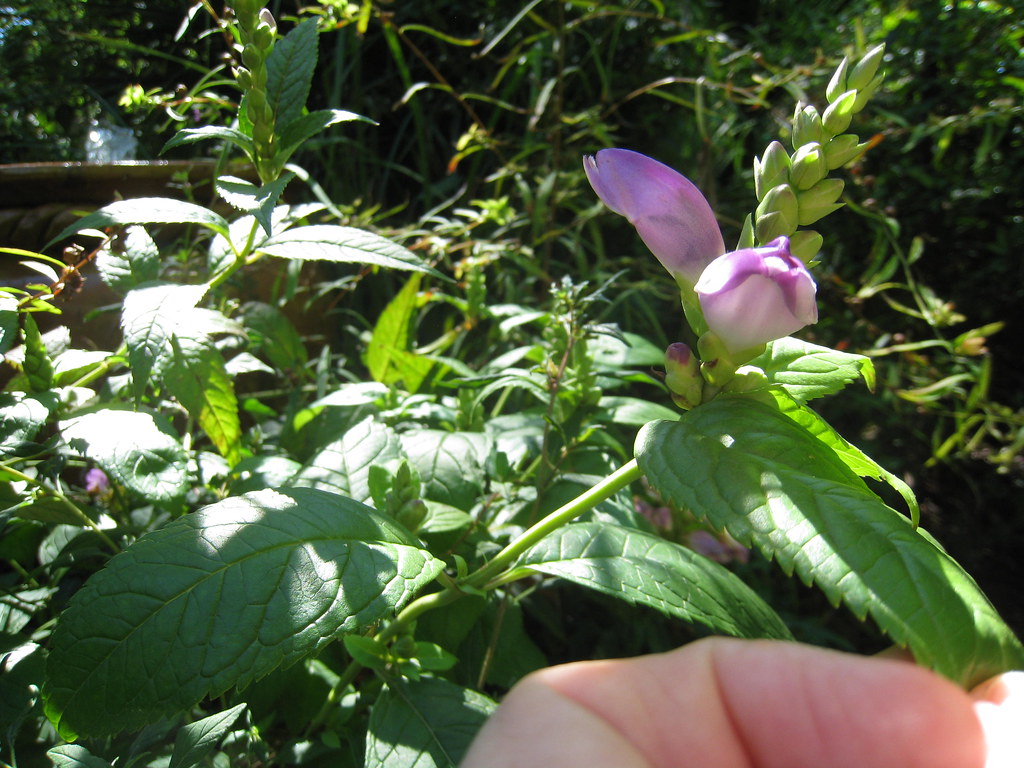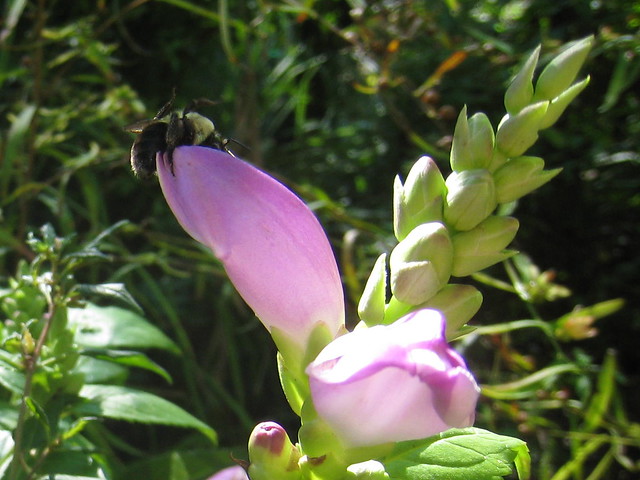 |
| Bumblebee inside translucent blossom of Rose Turtlehead AMcCormack |
First, the Turtlehead forces the bee to struggle through a tight, tubular opening. Then, the plant positions its nectar reward far at the back of its one-and-a-half-inch blossom. Once the bee reaches the nectar, she finds that the pollen she was counting on to feed the kids is stuck on the anthers. Determined, she vibrates her body violently to shake the pollen from the anthers. Now she must somehow work her way out of the bloom, and fly off with her load to another delectable Rose Turtlehead. The process is called buzz pollination, and it's not just Turtleheads that require it of their pollinators. Tomatoes, blueberries, and many wildflowers such as wild indigo (Basptisia australis) produce more and larger fruits if they are successfully buzz pollinated.
 |
| Bumblebee struggles to break free of the blossom AMcC |
Not every pollinator is up to the task. Honeybees and smaller native bees are too tiny. Only the Sumo wrestlers of the bee world, the bumblebees, can really deliver that buzz. What is the evolutionary brass ring that Turtlehead is reaching for? By withholding its reward from pollinators other than it's favored one, the plant encourages that selected pollen-carrier to visit another bloom of the same species--"pollinator constancy." Evidently, once the bumblebee finds something she likes, she sticks with it.
I had really hoped that my photos would help me identify the species of bumblebee, but I just didn't get enough of the insect in the frame. I'll keep trying though. There are several web pages that help with bee identification. My favorite is the identification key to bumblebees from Discover Life. The Xerces Society has a page devoted to the topography of the bumblebee. Bumblebee.org has a great color chart for identifying bumblebees as well as information about their life cycle and how to attract them.
The media has given quite a bit of attention to colony collapse disorder, which has caused the European honeybee to vanish from many places where it was once abundant. We can't afford to lose our native bees as well. The Xerces Society provides information about bumblebee conservation, as well as information about my region, Missouri.
Aerodynamically, the bumblebee shouldn't be able to fly, but the bumblebee doesn't know it, so it goes on flying anyway.
Mary Kay Ash
Not really true, aerodynamically, but isn't it a great quotation?

Yes, great quote.
ReplyDeleteJust send the pictures to Mike :)
Great idea! I'll send them on.
ReplyDelete